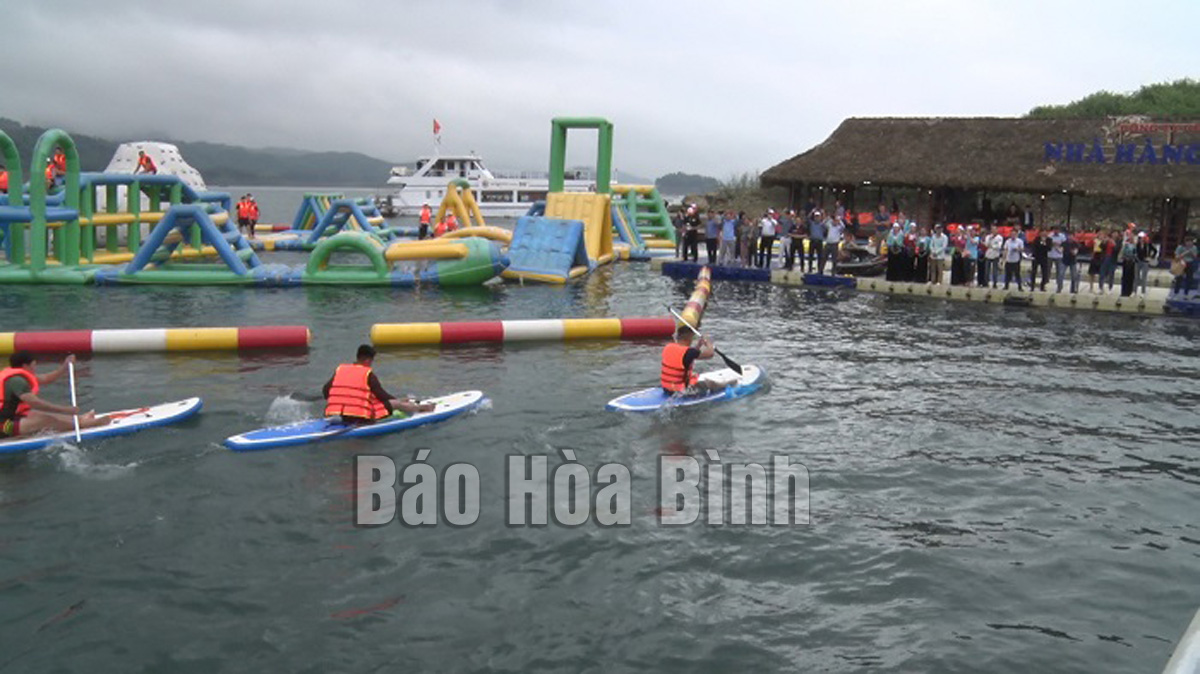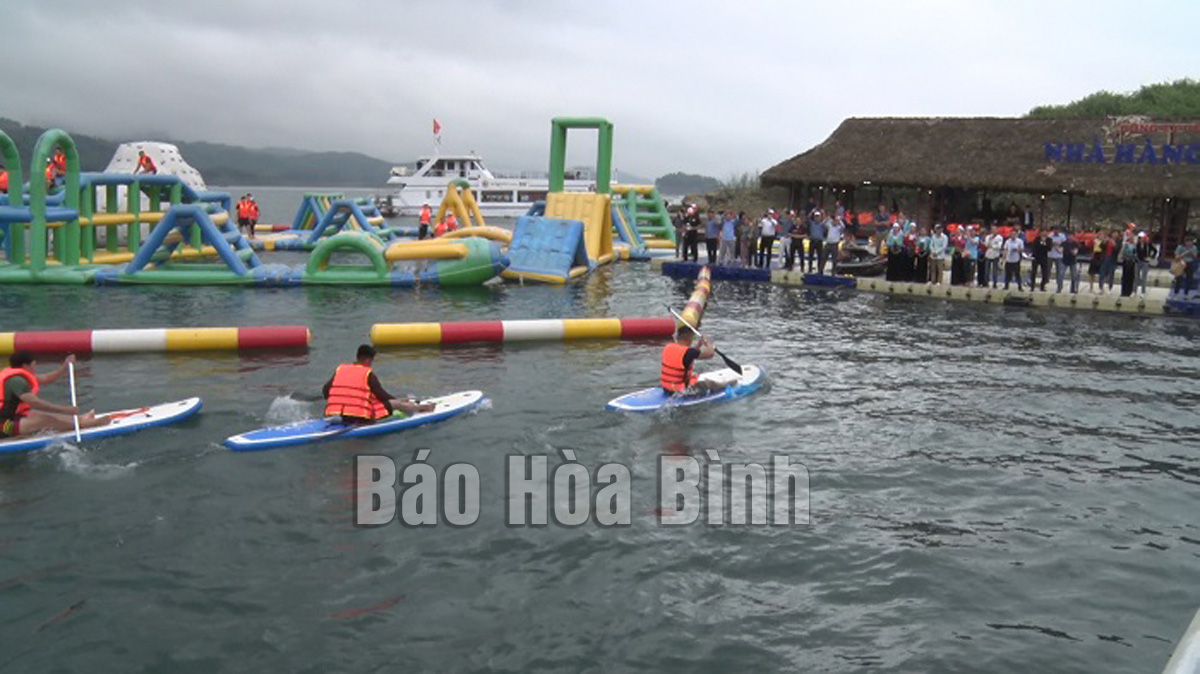
(HBO) – Tan Lac district, known as Muong Bi land in the past, aims to welcome about 270,000 visitors by 2025, earning some 85 billion VND from the tourism sector. To that end, the locality is working hard to lure more investments in tourism.
Local residents and tourists
attended the launching ceremony of green tours in Ngoi hamlet, Suoi Hoa last
April.
Tan Lac is rich in historical traditions and has been seen as the core of the
Hoa Binh culture. About 100km from Hanoi, the district serves as a gateway to
the northwestern region. It is home to 19 landscapes, archaeological sites and
cultural treasures of the Muong ethnic group.
In the past, tourists often flocked to Tan Lac in the spring to celebrate such
festivals as the Muong Bi Khai Ha (going down to the field), the Lo Son stream
fishing festival and the Ke Pagoda festival. However, Tan Lac now attracts
visitors throughout the year as the locality has invested much in tourism. It
has upgraded infrastructure and developed various tourism products like leisure
tourism, cultural tourism, eco-tourism and community-based tourism, in
combination with cultural preservation.
According to Dinh Son Tung, head of the district’s bureau of culture and
sports, Tan Lac has formed tourism hamlets like Luy Ai in Phong Phu commune,
Ngoi in Suoi Hoa commune, Chien in Van Son commune, and Buoi Cai in Phu Cuong
commune, with more than 10 families offering homestay services.
Luy Ai hamlet has preserved more than 50 traditional stilt houses of the Muong
ethnic group, along with tangible and intangible cultural heritage. It is one
of the 20 hamlets recognised by the Ministry of Culture, Sports and Tourism as
typical hamlets of ethnic groups nationwide.
Luy Ai has become a major tourism destination along National Highway 6, and
part of the tourism network in the northwestern region.
Apart from Luy Ai, Tan Lac plans to roll out the community-based tourism model
in other hamlets like Chieng, Ton Trong and Lu in Van Son commune, Bac Thung in
Quyet Chien commune, Trang Ta in Nhan My commune, and Tham in Suoi Hoa commune.
Tourists will have chances to experience daily activities of locals, join
traditional cultural festivals and explore traditional culture there. They also
can go trekking, stroll or ride a bike around the villages. Those who love to
discover local landscapes and cultures would love to explore Thac Bo, Hoa Tien,
Nam Son and Muoi caves that have been recognised as national relic sites, and
other provincial relic sites such as Nui Kien cave, Cot Co Mount, Trang
waterfall, and the Ngoc Son-Ngo Luong nature reserve.
To get exotic experiences, visitors should visit the tourism-culture site in
Ngoi hamlet, Suoi Hoa commune, where seven stilt houses have been standardized
for tourism services. A water park and a floating restaurant have also been put
into operation.
When the COVID-19 outbreak was basically put under control in Hoa Binh province
last April, Hoa Binh Tourism Services JSC launched green tours in Ngoi Hoa,
where holidaymakers can engage in water games and visit tourist sites.
With consensus of all-level Party committees, authorities and people in tapping
tourism potential, Tan Lac has created its own attractiveness in tourism./.
(Member
of the provincial journalists’ association)
Covering an area of over 52,000 hectares spanning districts of Mai Chau, Tan Lac, Cao Phong, Da Bac, and Hoa Binh City, Hoa Binh lake has strong potential for tourism development. In recent years, thanks to the attention of local Party Committees and authorities as well as support from international organisations, the advantages of tourism in the lake area have been utilised.
Mai Chau is a mountainous district and home to many ethnic groups such as Thai, Muong, Kinh, Mong, Dao, and Tay with distinctive cultural identities, creating a diverse and unique cultural treasure. Aware of its advantages, the district has paid attention to the preservation and promotion of ethnic groups’ cultural values so that culture will become a leverage for tourism and contribute to socio-economic development and life quality improvement.
According to the Hoa Binh provincial Department of Planning and Investment, in Hoa Binh Lake tourist area, there are currently 16 licensed or certified service, cultural and tourism investment projects with a land use area of about 1,444 hectares, and a total capital of over 3.3 trillion VND (133.5 million USD). In addition to investment attraction, the province is speeding up the implementation of projects so as to realise a goal of developing Hoa Binh Lake tourist area into a national one.
These days, tourist attractions in Mai Chau district, especially those highlighted by the charming and romantic white Ban (Bauhinia) flower blossoms, are attracting a large number of visitors from across the country. Visiting these sites, tourists can immerse themselves in the pristine and majestic beauty of nature.



